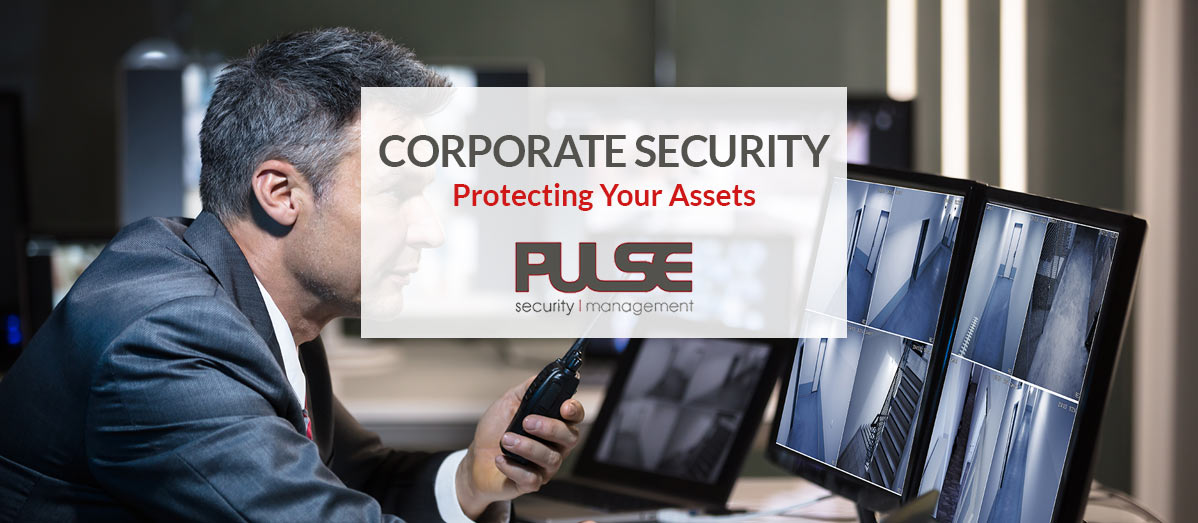Improve Corporate Security: Methods for a Robust Defense
Improve Corporate Security: Methods for a Robust Defense
Blog Article
From Cybersecurity to Physical Measures: Strengthening Company Safety in an Altering Globe
By integrating the toughness of both cybersecurity and physical protection, business can produce a thorough defense method that deals with the diverse variety of dangers they deal with. In this discussion, we will certainly discover the transforming danger landscape, the requirement to integrate cybersecurity and physical security, the application of multi-factor authentication actions, the value of worker recognition and training, and the adaptation of safety and security actions for remote labor forces. By checking out these key locations, we will certainly obtain important understandings into how organizations can strengthen their business safety and security in an ever-changing globe.
Recognizing the Altering Danger Landscape
The developing nature of the modern-day globe necessitates a detailed understanding of the changing hazard landscape for effective business safety. In today's interconnected and electronic age, threats to corporate safety and security have actually come to be a lot more complex and sophisticated. As technology breakthroughs and services become increasingly reliant on digital infrastructure, the possibility for cyberattacks, data violations, and various other security breaches has actually considerably raised. It is crucial for organizations to remain notified and adjust their security measures to resolve these advancing hazards.
One secret facet of understanding the transforming danger landscape is acknowledging the different kinds of hazards that organizations encounter. In addition, physical threats such as burglary, criminal damage, and corporate reconnaissance remain widespread concerns for companies.
Monitoring and assessing the threat landscape is vital in order to determine possible dangers and susceptabilities. This entails staying upgraded on the current cybersecurity fads, analyzing risk knowledge reports, and carrying out regular threat evaluations. By comprehending the transforming risk landscape, companies can proactively execute appropriate security procedures to alleviate dangers and safeguard their possessions, online reputation, and stakeholders.
Integrating Cybersecurity and Physical Protection
Incorporating cybersecurity and physical safety and security is crucial for thorough company protection in today's interconnected and electronic landscape. As companies increasingly count on modern technology and interconnected systems, the limits in between physical and cyber threats are becoming obscured. To effectively safeguard against these dangers, an alternative strategy that combines both cybersecurity and physical safety and security actions is vital.
Cybersecurity concentrates on shielding digital assets, such as systems, networks, and information, from unapproved gain access to, disturbance, and theft. Physical safety and security, on the other hand, includes measures to secure physical properties, individuals, and facilities from risks and susceptabilities. By incorporating these two domain names, organizations can resolve susceptabilities and risks from both digital and physical angles, therefore boosting their total safety posture.
The assimilation of these two disciplines enables a much more detailed understanding of safety and security risks and allows a unified action to incidents. Physical access controls can be enhanced by incorporating them with cybersecurity methods, such as two-factor verification or biometric recognition. Likewise, cybersecurity measures can be matched by physical protection measures, such as monitoring electronic cameras, alarm systems, and secure accessibility factors.

Executing Multi-Factor Authentication Actions
As organizations increasingly prioritize extensive safety and security measures, one reliable approach is the implementation of multi-factor verification actions. Multi-factor verification (MFA) is a safety and security approach that requires individuals to offer numerous forms of recognition to access a system or application. This approach includes an additional layer of protection by integrating something the individual knows, such as a password, with something they have, like a safety or a finger print token.
By implementing MFA, organizations can significantly enhance their safety and security stance - corporate security. Standard password-based verification has its restrictions, as passwords can be easily compromised or failed to remember. MFA mitigates these threats by adding an added authentication aspect, making it a lot more tough for unauthorized individuals to access to sensitive info
There are several types of multi-factor verification approaches offered, consisting of biometric verification, SMS-based verification codes, and equipment tokens. Organizations require to analyze their particular needs and choose the most ideal MFA solution for their demands.
Nonetheless, the implementation of MFA need to be thoroughly planned and executed. It is crucial to strike a balance between safety and security and functionality to stop customer aggravation and resistance. Organizations ought to additionally take into consideration prospective compatibility issues and provide ample training and assistance to make certain a smooth change.
Enhancing Employee Understanding and Training
To enhance corporate security, companies must prioritize boosting staff member recognition and training. Lots of protection breaches happen due to human error or lack of understanding.
Reliable staff member awareness and training programs ought to cover a large range of topics, including information protection, phishing assaults, social design, password hygiene, and physical safety steps. These programs need to be my company customized to the certain needs and responsibilities of different employee duties within the company. Regular training workshops, simulations, and sessions can help workers develop the essential skills and expertise to determine and respond to safety risks successfully.
Additionally, organizations must encourage a culture of protection understanding and provide continuous updates and reminders to maintain staff members educated about the current risks and reduction strategies. This can be done via internal interaction channels, such as newsletters, intranet websites, and e-mail campaigns. By fostering a security-conscious workforce, organizations can considerably reduce the possibility of safety incidents and shield their useful assets from unauthorized accessibility or concession.

Adapting Security Actions for Remote Workforce
Adjusting corporate safety measures to fit a remote labor force is crucial in guaranteeing the protection of delicate information and assets (corporate security). With the raising fad of remote work, organizations have to execute ideal protection procedures to reduce the threats related to this new means of functioning
One critical facet of adapting safety actions for remote job is establishing safe and secure communication channels. Encrypted messaging platforms and digital exclusive networks (VPNs) can aid protect try this sensitive info and prevent unapproved accessibility. Furthermore, companies need to apply the use of strong passwords and multi-factor verification to enhance the safety and security of remote accessibility.
An additional essential factor to consider is the implementation of secure remote gain access to services. This entails providing workers with safe access to business sources and data with digital desktop computer facilities (VDI), remote desktop computer procedures (RDP), or cloud-based remedies. These technologies ensure that sensitive information remains safeguarded while enabling workers to do their duties efficiently.

Lastly, detailed protection awareness training is vital for remote employees. Training sessions need to cover ideal methods for securely accessing and dealing with delicate information, recognizing and reporting phishing attempts, and preserving the general cybersecurity health.
Verdict
Finally, as the danger landscape remains to progress, it is crucial for companies to strengthen their protection determines both in the cyber and physical domain names. Incorporating cybersecurity and physical safety and security, implementing multi-factor verification procedures, and boosting staff member understanding and training are important actions towards achieving robust corporate protection. Furthermore, adjusting safety steps to fit remote labor forces is critical in today's changing globe. By implementing these steps, organizations can reduce risks and shield their important assets from prospective threats.
In this discussion, we will certainly explore the transforming risk landscape, the demand to integrate cybersecurity and physical safety, the implementation of multi-factor authentication measures, the significance of worker recognition and training, and the adaptation of safety and security actions for remote labor forces. Cybersecurity measures can be complemented by physical security steps, such as security cameras, alarm systems, and safe and secure accessibility factors.
As organizations progressively focus on comprehensive safety and security steps, one effective strategy is the execution of multi-factor verification actions.In final thought, as the danger Find Out More landscape continues to evolve, it is essential for companies to enhance their protection measures both in the cyber and physical domains. Integrating cybersecurity and physical safety, implementing multi-factor authentication steps, and boosting staff member understanding and training are crucial steps in the direction of achieving robust business safety.
Report this page